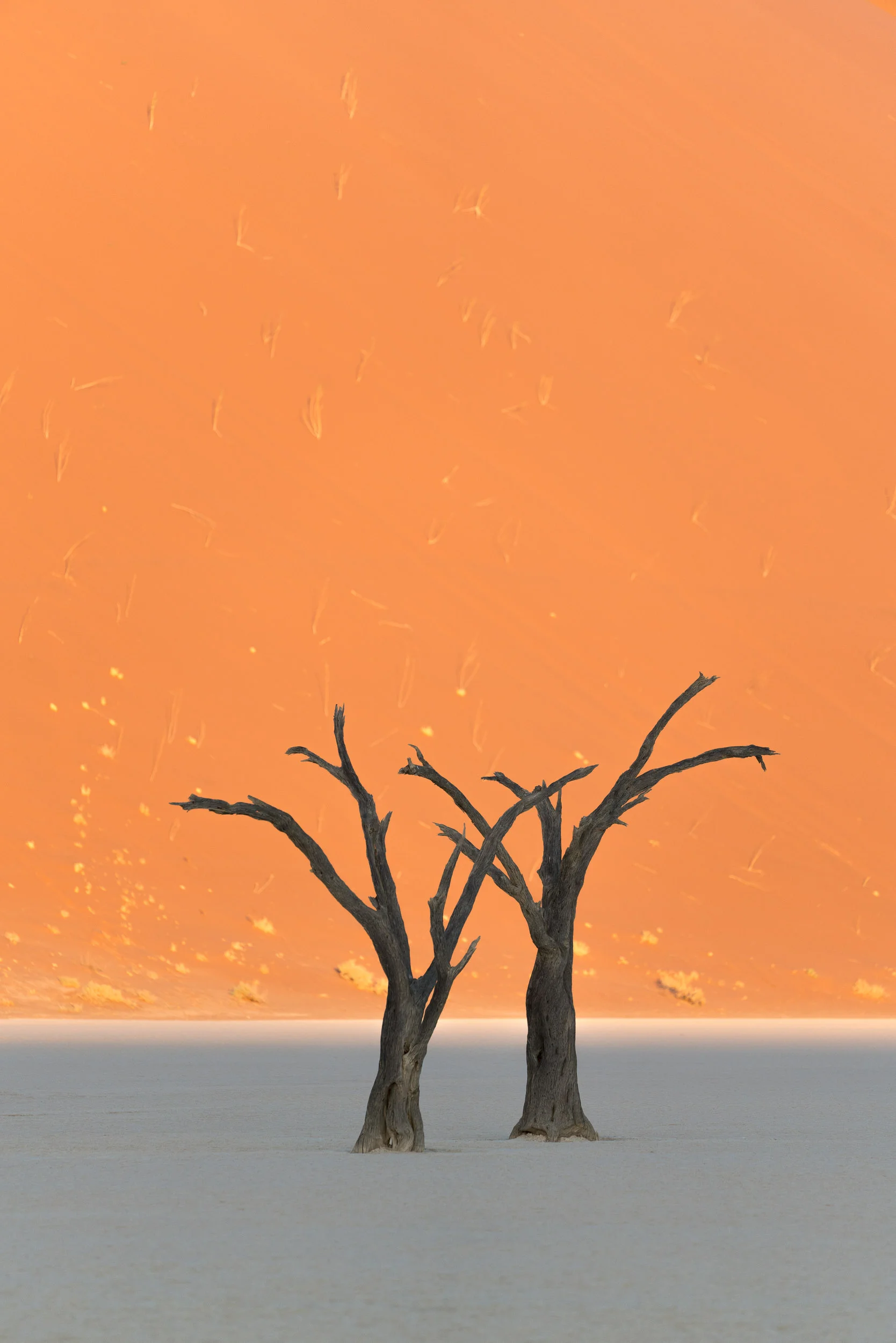From the entrance of the Sossusvlei National Park, it was sixty kilometres on paved roads to the first car park for two-wheel drive vehicles. From there, the road turns into sand so we lowered the tire pressure on our four-wheel drive and drove the final three kilometres to the parking area for Deadvlei. The key to not getting stuck in the sand is to drive at a steady pace and not to stop until at the car park.
We drove this route back and forth several times over the next two days. We watched how the light shifted from sunrise to sunset over the Sossusvlei dunes and Deadvlei—a clay pan so dry the skeletons of trees dead from 600-700 years ago have yet to decompose.

































